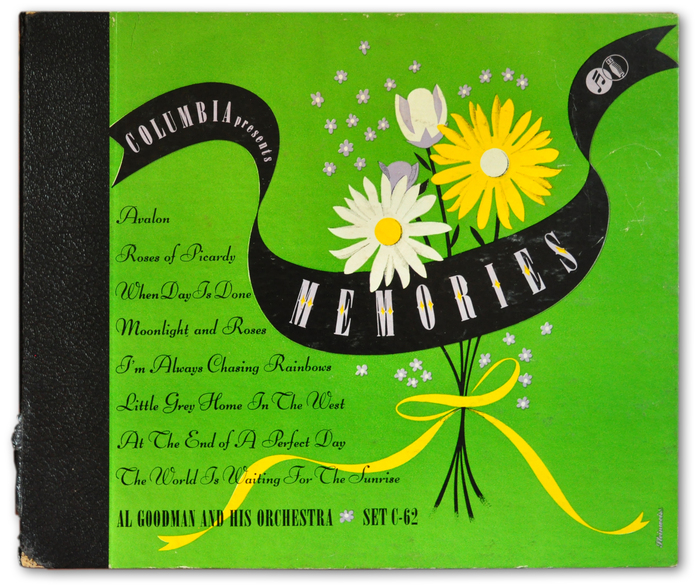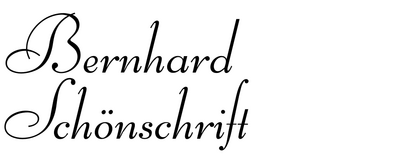Al Goodman and His Orchestra – Memories album art

Source: www.flickr.com Uploaded to Flickr by Ernie Uszniewicz. License: All Rights Reserved.



Here’s where record albums got their name from: in the first half of the 20th century, multiple 78 rpm records were collected in a bound book resembling a photo album. This example from 1941 contains four 10″ shellac records with big-band jazz by Al Goodman and His Orchestra. Only after 1948 did this format evolve into single vinyl long-playing (LP) records played at 33⅓ rpm.
The cover is by Alex Steinweiss (1917–2011), the inventor of album art, who in 1939 became the first art director for Columbia Records. With the flowers and ribbons – common ingredients in his works – this design wouldn’t look out of place as the cover of a photo album or a herbarium either.
While the names of record company and artist as well as the catalog number are in Onyx (1937), the title is in an even more condensed Didone. Chances are it’s Slim Black, a phototype version of Deberny & Peignot’s Olympic (1937), shown by Photo-Lettering before 1950. At least the R (without uptick) and the E with the large middle serifs suggest as much. Steinweiss apparently added mid-stem spurs (and in the case of R, a mid-bowl spur) and yellow diamonds. Similar ornamentation can be found in chromatic wood type.
The track names are set in Bernhard Schönschrift (1925). The script typeface was designed by Lucian Bernhard, who helped young Steinweiss find a job in Joseph Binder’s studio at the beginning of his career. Photo-Lettering carried it under the name Bernhard Cursive.
This post was originally published at Fonts In Use